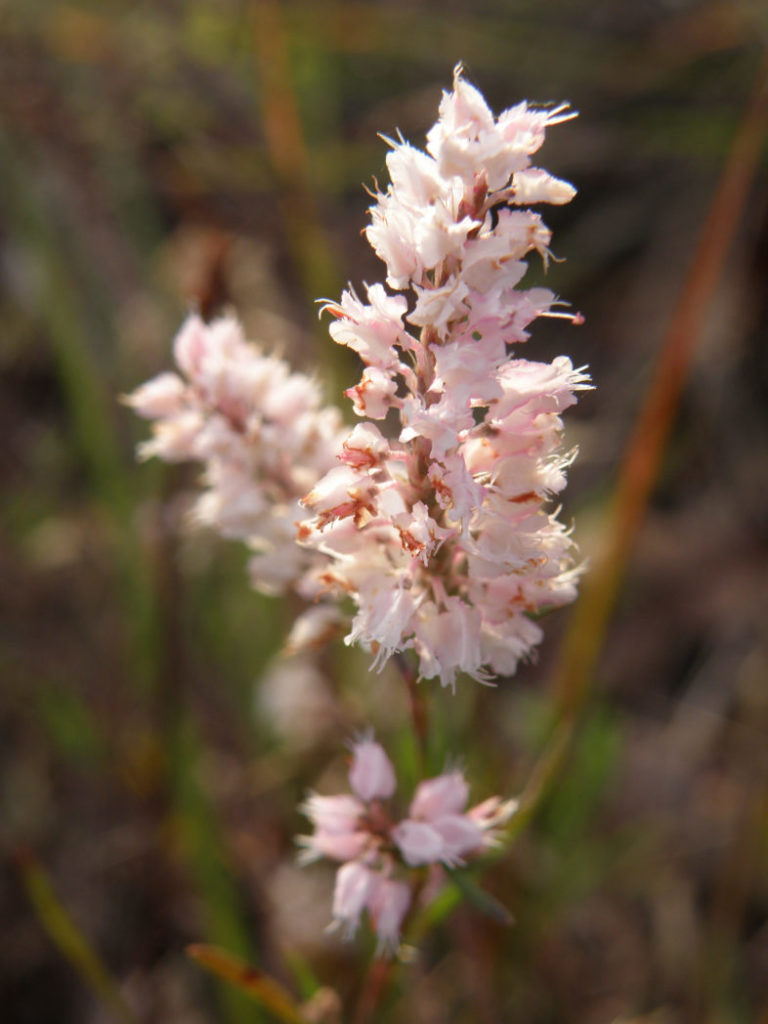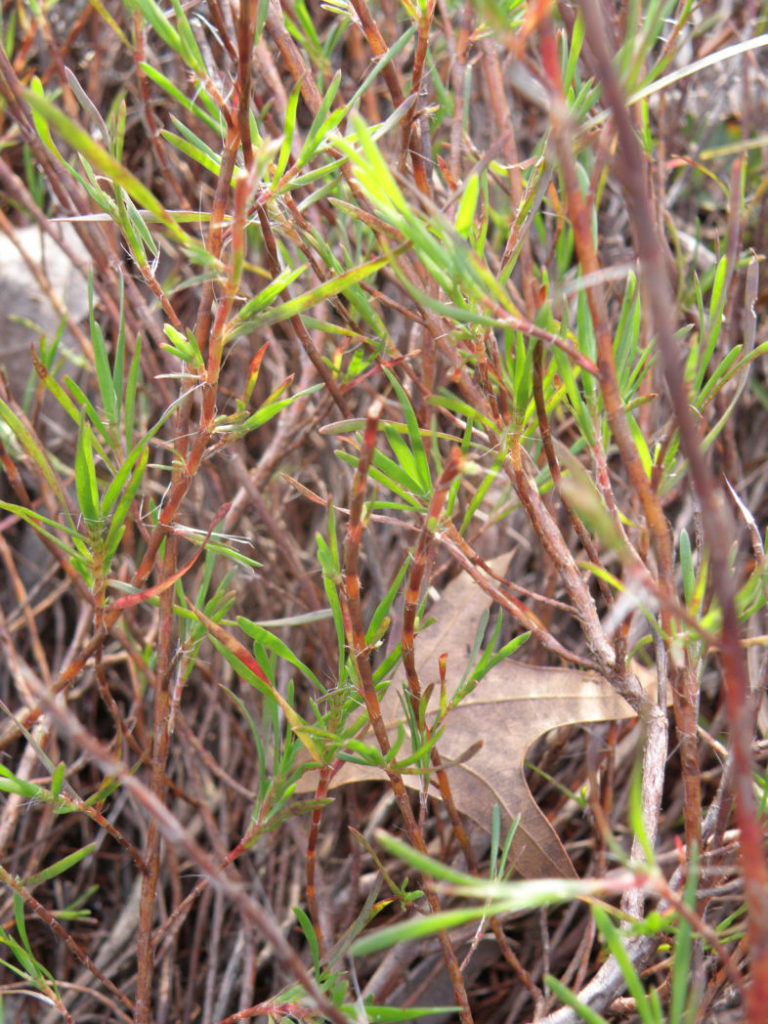Sandhill wireweed
Pictured above: Sandhill wireweed (Polygonum nesomii) by Stacey Matrazzo. Click on terms for botanical definitions. View post as a PDF.
Also known as Largeflower jointweed, Sandhill wireweed (Polygonum nesomii, form. Polygonella robusta) is a deciduous woody shrub that produces an abundance of spike-like flowering clusters. Individual flowers are absent of petals; rather, the bloom consists of eight prominent stamens surrounded by sepals that range in color from pale pinkish-white to deep rose. The inner sepals are fringed. Leaves are linear and almost needle-like; they are alternately arranged in clusters. Stems are woody and brittle.

Sandhill wireweed is mostly a summer and fall bloomer, with October being its most abundant blooming time, but year-round blooms are not uncommon. It occurs naturally in dunes, scrub and sandhills, and is primarily pollinated by bees. Its seeds are eaten by birds. Sandhill wireweed is endemic to Florida. It occurs nowhere else in the world.
Polygonum nesomii was formerly classifed as Polygonella robusta. The genus names Polygonella and Polygonum (as well as the family name Polygonaceae) are derived from the Greek words poly, meaning “many” and goni, meaning “knee or joint.” This refers to the swollen nodes that many of the species in the family possess.
Family: Polygonaceae (Knotweed or smartweed family)
Native range: Central peninsula and Bay, Franklin and Wakulla counties)
To see where natural populations of sandhill wireweed have been vouchered, visit florida.plantatlas.usf.edu.
Hardiness: Zones 8B–10B
Soil: Extremely dry, well-drained and acidic sandy soils
Exposure: Full sun to minimal shade
Growth habit: 18–24”+ tall and just as wide
Propagation: Seed
Garden tips: Sandhill wireweed is suitable for a dry wildflower garden. It does not like a lot of moisture. Given the proper requirements of open, sandy areas, this plant will slowly establish colonies by self-seeding.
Sandhill wireweed plants are not typically available commercially, but a few nurseries that specialize in native plants occasionally carry it. Visit PlantRealFlorida.org to find a native nursery in your area.

